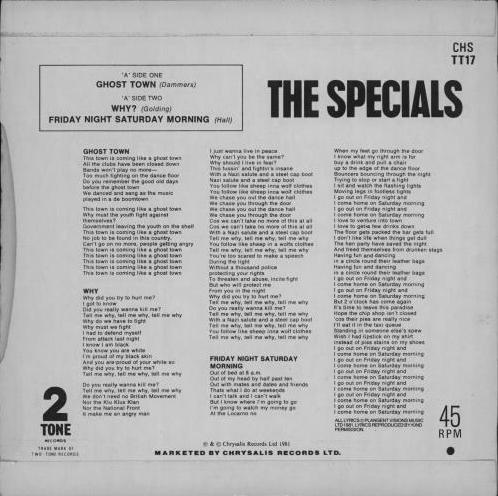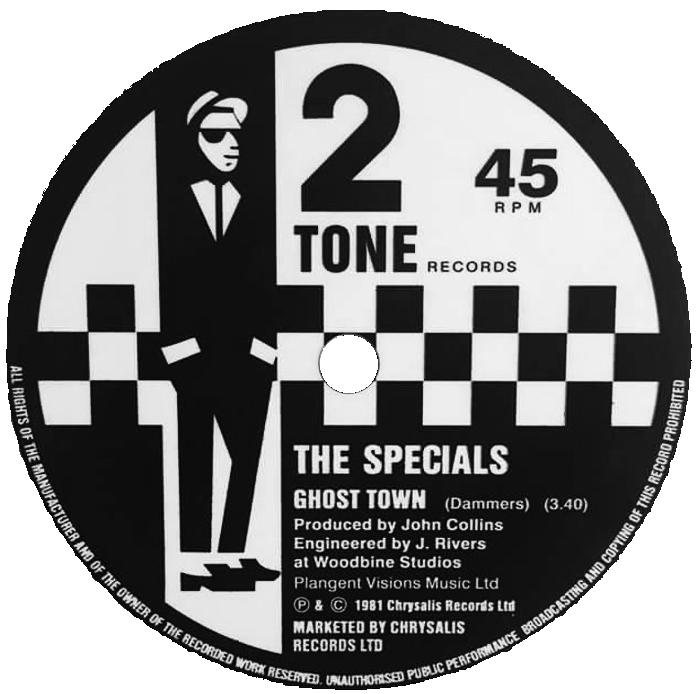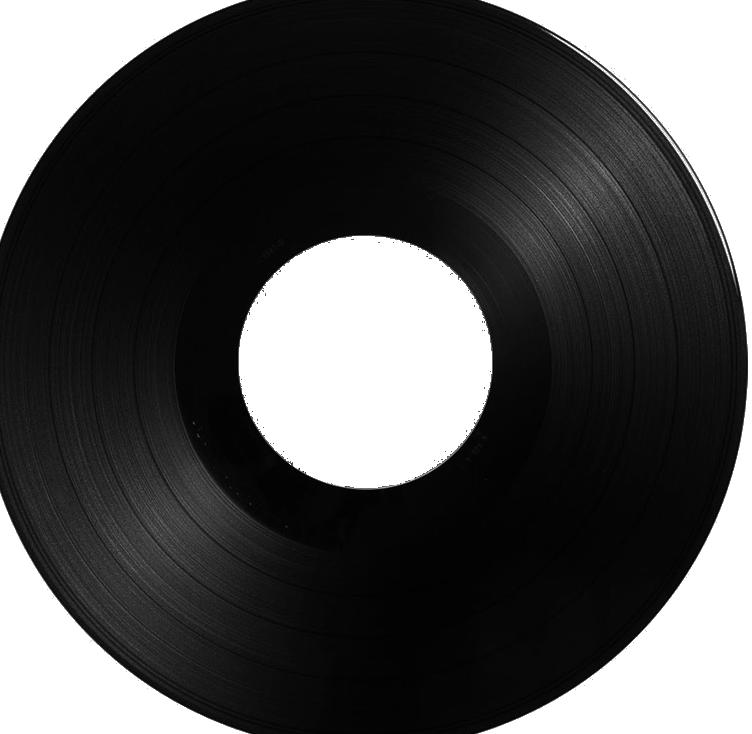
5 minute read
2 TONE RECORDS
2 Tone Records was founded Inspired by Coventry’s multiculturalism and ska music.
It was in the West Midlands that another young maverick in a bedsit was looking to the past to set up an indie label. This time, it was the ska records of Jamaica and the multiculturalism of his adopted city of Coventry that were the inspirations. It was here that the 2 Tone label was founded in 1979, just past the dog groomer’s.
Advertisement
2 Tone was ostensibly set up by Jerry Dammers. It was his idea, his brainchild. With a label which had a very specific identity and a specific remit, which was to be anti-racist, anti-sexist. Young people seized on that and said, “Yes, we understand that.” Along with his own band, The Specials, Dammers signed a number of local acts to the label including The Selecter and The Beat. Success was instantaneous. For that very, very brief period of time between 1979 and 1982, pretty much everything that the 2 Tone label put out became hits. There was a time, in 1979, early 1980, where there were three bands, all from a tiny label called 2 Tone, who were all on Top Of The Pops at the same time. Unlike the other independents of the time, 2 Tone was pop, and it had hits. But, in common with a lot of the other indies, it was driven by a charismatic Svengali figure. Jerry Dammers of the ska revival band the Specials started the record label in 1979. Chrysalis had wanted to sign the Specials, but Dammers arranged a label deal, for Chrysalis to fund 15 singles a year and release at least ten of those. The label spawned the 2 Tone music and cultural movement, which was popular among skinheads, rudies and some mod revivalists. The label stopped operating in 1986. The record label signed the Selecter, Madness and The Beat, but they all left within two years.
2 Tone Records acts signed a contract that allowed them to leave the label after releasing just one single, which was unusual in the record industry. Although 2 Tone Records was closely identified with the ska revival, efforts were made to broaden the label’s musical output, releasing recordings by artists such as singer-songwriter Elvis Costello and the funk-punk band the Higsons. Dammers, with the assistance of Horace Panter and graphic designers John “Teflon” Sims and David Storey, created artwork that was to become central to 2 Tone Records. The Walt Jabsco logo portrays a man in a black suit, white shirt, black tie, pork pie hat, white socks and black loafers. The fictional character was based on a photograph of Peter Tosh, a former member of the Wailers.
“I would say Jerry was a visionary. Mixing up rock music with ska music, and turning it into music that people could dance to, and music people could think about.
Jerry Dammers



Ghost Town sleeve and record, front and back [1981]

2 TONE RECORDS
Ghost Town : The Specials’ creative peak and their last shining moment
Ghost Town proved the pivotal 2 Tone release, encapsulating the urban alienation, decay and the violent mood on the streets in 1981 – few would agree its reign at the top of the charts as Britain’s inner cities blazed was coincidental. It also destroyed the Specials. If More Specials was a dark, uncomfortable listen, the Specials were only reflecting the world that surrounded them. Their next release, Ghost Town, seemed to actually anticipate real-life events: only weeks after its release, a wave of riots spread across the nation, from London to Leicester, Portsmouth to Preston, while the gig the group performed in Coventry the evening of the single’s release was half-full, because the National Front were marching across the city that day, and concertgoers feared corresponding violence in the stalls. But Dammers had no gift for prophecy; as he explained to Alexis Petridis in 2002, you only had to open your eyes to see what was coming. In Glasgow, there were these little old ladies on the streets selling all their household goods, their cups and saucers. It was unbelievable. It was clear that something was very, very wrong.”
The mood of the song is both pre- and postapocalyptic: the lyrics say the crisis is coming while the eerie, hollowed-out music says that it’s already happened and the band are just wandering the wreckage. During the fraught recording Jerry Dammers called it “the greatest record that’s ever been made in the history of anything”. Greater than its prescience was Ghost Town’s artistry. Perhaps Dammers’ crowning achievement Ghost Town was a symphony of disquiet, combining Hammer-horror organ, rocksteady bass, baroque horns, doomy declamations and wailing, needling harmonies. The extended version of the song, meanwhile, found space for a mournful, profound solo from mainstay trombonist Rico that played out like a long, sad exhale over the ruins. “It was a combination of the first album and the second album, the complete history of the band gelled in one song,” said Dammers of the track, which he spent over a year composing and perfecting, often amid the slow, acrid collapse of his band.
The track went on to top the UK charts, but, in the dressing room at Top of the Pops before what should have been a celebratory appearance, Hall, Golding and Staple announced to Dammers that they were exiting the group to form the Fun Boy Three.
Almost inevitably, tensions tore the label and the band apart. But not before they’d had time to create their masterpiece. With record high unemployment leading to rioting in the streets, Ghost Town topped the charts. Within two short years, 2 Tone had burst out of its West Midlands bubble and taken the pulse of the nation.







